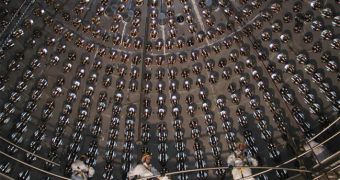In late 2011, the world of particle physics was taken by storm by the results of a research team based in Italy, which announced that it had discovered faster-than-light neutrinos. A recent investigation has finally revealed what led the team to this erroneous result.
The discovery and subsequent announcement were not taken lightly in the international scientific community, due to the extensive implications that they would have had, if proven correct. Basically, they held that Albert Einstein's Theory of General Relativity was not necessarily correct.
One of the most important aspects of the famed theory is that nothing in the Universe travels faster than light. The team working at the Laboratori Nazionali del Gran Sasso (LNGS) discovered that neutrinos, particles with nearly zero mass and neutral electrical charge, were moving faster than photons.
Under other circumstances, any physics graduate student would have attacked the paper, but the issue with it was that it had a high degree of certainty. Fully aware of the implications the paper they were about to release would have on science, the team double- and triple-checked their results beforehand.
Mathematically speaking, their calculations were beyond reproach. Therefore, critics and peer reviewers focused their attention on other aspects of the experiments that may have led to the readings.
In order to understand what went on, it's important to know the experimental setup. The LNGS OPERA detector analyzes neutrino beams that are produced by the European Organization for Nuclear Research's (CERN) Large Hadron Collider (LHC), some 730 kilometers (450 miles).
OPERA then analyzes how long it takes for the neutrinos to reach it, as opposed to photons. The relative positions of the LHC and LNGS are established via precise GPS satellites. What the team discovered in September and November 2011 was that neutrinos were arriving in Italy about 60 nanoseconds earlier than photons.
This meant that light traveled at a speed of 299,792 kilometers per second, whereas neutrinos were moving at 299,800 kilometers per second. In a new analysis, it was determined that the source of the error were three fiber optics cables.
They connected a critically important computer to a GPS receiver. Since the distance between the LHC neutrino source and the OPERA experiment could not be calculated precisely, the speed of the elementary particles appeared distorted as well, leading to the result, Space reports.
At this point, the OPERA team is planning to conduct an additional series of experiments on the speed of neutrinos and photons, this time using secure optical fibers cables. Certainly, the scientific community will go into shock if the same results pop up again.

 14 DAY TRIAL //
14 DAY TRIAL //